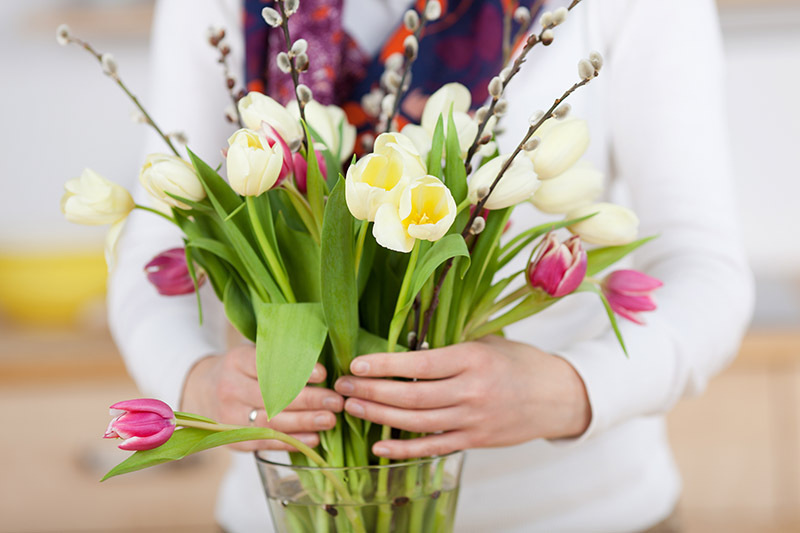Nurture Your Orchids with Careful Attention
Posted on 17/08/2025
Nurture Your Orchids with Careful Attention: A Complete Guide for Thriving Blooms
Orchids are prized for their exotic beauty, captivating colors, and unique blooms, making them one of the most celebrated houseplants around the world. However, nurturing your orchids with careful attention is essential for maintaining their vibrancy and encouraging repeat flowering. This comprehensive article delves into the best practices for orchid care, ensuring your plants thrive and reward you with breathtaking displays year after year.
Understanding Orchids: Diversity and Delicate Needs
The Orchidaceae family is the largest group of flowering plants, boasting over 25,000 varieties. From the popular Phalaenopsis to the dramatic Cattleya and rare Vanda, each orchid type has its own subtle requirements. Yet, all orchids share certain fundamental needs that must be met to truly nurture your orchid plants.
- Epiphytic nature: Most common orchids grow on trees in the wild, absorbing moisture and nutrients from the air and rain.
- Root sensitivity: Their roots are exposed and sensitive, making them highly reactive to care methods.
- Climate preferences: Orchids thrive in consistent, humid, and warm environments.

Optimal Lighting: Illuminating Success for Your Orchids
Proper lighting is key to healthy orchid development. Without enough light, orchids may not bloom; too much direct sun can scorch the leaves.
How Much Light Do Orchids Need?
- Bright, Indirect Light: Most orchids need light similar to what they'd receive beneath a tree canopy--filtered but abundant.
- Window Placement: A south or east-facing window is ideal for orchids, but avoid harsh midday sun by using sheer curtains.
- Leaf Color as a Guide: Healthy orchids have bright green leaves. Dark green leaves signal too little light; reddish tones suggest overexposure.
Artificial Lights for Orchid Care
For growers without enough natural sunlight, supplementing with fluorescent or LED grow lights can keep your orchids blooming year-round. Position the lights 12-18 inches from the plant and run them for 12-16 hours daily.
Watering Your Orchids: The Art of Precision
Among all care aspects, watering orchids with careful attention is paramount. Over-watering is the most common mistake, leading to root rot, while under-watering can cause shriveling.
Best Watering Techniques for Thriving Orchids
- Check the Medium: Only water when the potting mix is nearly dry, but not completely parched.
- Water Thoroughly: Run tepid water through the pot until it drains, then let the excess escape.
- Timing: Morning watering is best, allowing leaves and roots to dry by evening (prevents fungus and rot).
- Avoid Water on Leaves or Crown: To reduce risk of rot, water only the potting medium, not the leaves.
Tip: Many orchid lovers use the "soak and dry" method--watering deeply, then letting the roots dry out before the next session.
Humidity and Airflow: Creating a Tropical Paradise
Because orchids are native to rainforests, they flourish in humid environments. Maintaining adequate humidity and airflow helps orchids absorb moisture and prevents disease.
Simple Ways to Elevate Humidity
- Humidity Trays: Place pots on shallow trays filled with pebbles and water (pot should not touch water directly).
- Misting: Light misting can help, but ensure it's in the morning and leaves dry quickly.
- Room Humidifiers: Use in dry climates or during winter heating seasons.
Crucial Note: Good airflow is as important as humidity. Use a small fan to gently circulate air around your orchids and discourage fungus.
Choosing the Right Orchid Potting Mix
To nurture orchids with careful attention, use a potting medium close to their natural habitat. Ordinary soil holds too much water and suffocates orchid roots.
Best Potting Media for Orchids
- Bark chips: Most popular; provide excellent drainage and airflow.
- Sphagnum moss: Retains moisture, ideal for smaller pots or young orchids.
- Perlite or charcoal: Often added to increase drainage and airiness.
Repotting your orchids every 1-2 years keeps roots healthy and prevents the medium from breaking down. Spring is the best time, after blooming.
Feeding Your Orchids: Fertilize for Flourishing Growth
Orchids have modest nutritional needs but regular feeding helps orchids flourish and bloom beautifully. A balanced, orchid-specific fertilizer is your best ally.
How and When to Fertilize Orchids
- Weak and Frequent: Use a diluted solution ("weakly, weekly"), applying a quarter or half the recommended fertilizer amount every week during active growth.
- Flush Monthly: Once a month, water your orchid thoroughly to wash out salts and fertilizer buildup.
- Bloom Boosters: Use fertilizers higher in phosphorus when you want to encourage flowering.
Managing Orchid Pests and Diseases
With attentive care, orchids are resilient, but they are still vulnerable to certain pests and diseases. Regular inspection is key to early intervention.
Common Orchid Pests
- Aphids: Small, sap-sucking insects found on new growth and buds. Rinse off or treat with insecticidal soap.
- Scale and Mealybugs: Look like white or brown bumps on leaves and stems.
- Spider Mites: Cause fine webbing and leaf stippling. Increase humidity and wash leaves to deter them.
Orchid Diseases and Solutions
- Root Rot: Most common, caused by overwatering. Ensure pots drain freely and roots stay healthy.
- Leaf Spots: Often fungal or bacterial. Remove affected leaves and avoid wetting the foliage.
- Crown Rot: Can be fatal. Prevent by keeping the plant's center dry.
Proactive care and regular checks help prevent most pest and disease problems in orchids.
Encouraging Blooms: Patience and Proper Conditions
Few things are as rewarding as watching your orchid burst into bloom. However, orchids can be particular about flowering--sometimes requiring certain triggers.
Tips to Encourage Orchid Flowering
- Temperature Shift: Some orchids, like Phalaenopsis, need a slight temperature drop at night to initiate blooms.
- Light Levels: After resting post-bloom, increase light to signal a new cycle.
- Consistent Care: Avoid sudden changes in watering, feeding, or moving the plant.
Note: After blooming, allow your orchid some rest--keep watering lightly and withhold fertilizer until new growth appears.
Repotting Orchids: Refreshing Roots and Promoting Health
Regular repotting not only refreshes the potting medium but also offers you a chance to examine the roots and promote healthy orchid growth.
Signs That Your Orchid Needs Repotting
- Potting medium has broken down or smells sour.
- Roots are overflowing and circling the pot.
- Plant is top-heavy or unstable.
Simple Steps for Repotting Orchids
- Gently remove the plant from its pot.
- Trim dead or rotting roots with sterile scissors.
- Place in fresh orchid bark or sphagnum moss.
- Water lightly and resume normal care.
Tip: Choose a slightly larger pot, but avoid over-potting as orchids prefer tight quarters.
Advanced Orchid Care: Flower Spike Staking and Propagation
For enthusiasts ready to take their orchid nurturing to the next level, learn about staking and propagation.
Staking Orchid Flower Spikes
- Use a soft tie and a support stick to keep long spikes upright.
- Be gentle--avoid damaging flower buds.
Orchid Propagation: Keikis and Division
- Keikis: Some orchids produce small baby plants on flower spikes. Pot these separately once roots reach a few inches long.
- Division: Larger varieties like Cattleyas can be divided. Each section should have 3-4 healthy bulbs and roots.

Frequently Asked Questions on Orchid Care
How often should you water orchids?
Most orchids need watering every 7-10 days, but let the potting mix almost dry before watering again. Environmental factors may speed up or slow down drying.
Why are my orchid leaves turning yellow?
Yellow leaves may signal overwatering, nutritional deficiency, or too much direct sun. Review your care routine and correct as needed.
What is the best temperature for orchids?
Most orchids thrive between 65?F and 80?F (18?C-27?C) during the day, with a nightly drop of 10-15?F for many varieties.
Can I grow orchids outdoors?
Yes--if you live in a mild, frost-free region. Otherwise, bring your orchid inside when temperatures drop below 55?F (13?C).
Conclusion: The Joys of Diligent Orchid Care
Taking the time to nurture your orchids with careful attention offers abundant rewards--vivid blooms, lush foliage, and a personal connection with one of nature's most alluring wonders. By understanding their unique needs for light, water, humidity, feeding, and repotting, you can transform your home into an orchid paradise. Remember: consistency, observation, and gentle adjustments are the secrets to growing orchids that will dazzle you for years to come. Share your orchid journey with fellow plant lovers, and enjoy every new bud as a testament to your careful, loving attention!
Latest Posts
Office Zen: Best Low Maintenance Plant Picks for Easy Care
The Charismatic Peony: Symbolism and Colour Stories
Nurture Your Orchids with Careful Attention





